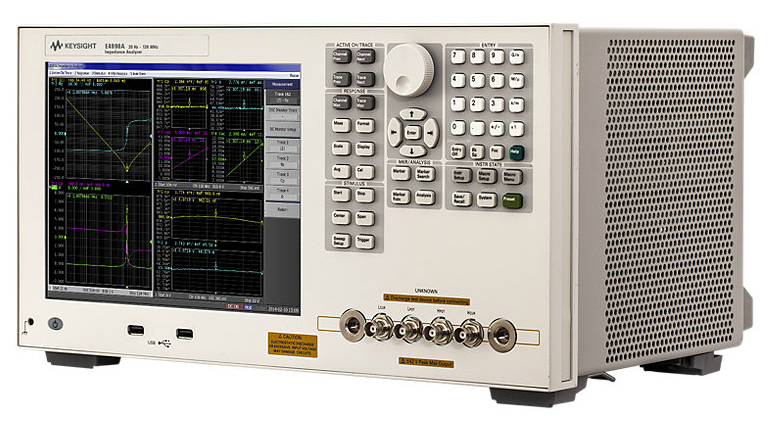Essentially, an impedance analyzer is a device that can be used to measure complex electrical impedance. When used as a component of an electronic test set, it can measure the impedance of a component as a function of the test frequency. Moreover, the device can be used to characterize a wide range of resistors, capacitors, inductors, and transformers.
Measure complex electrical impedance as a function of frequency
Traditionally, electrical impedance is viewed as a complex conductivity, representing the relationship between the current flowing through a two-terminal circuit element and the sinusoidal voltage between the terminals. It can be measured in a wide variety of frequencies. It is used for diagnostic, environmental, and clinical applications.
Electrical impedance can be used to determine the state of a cell or a cellular tissue, monitor the activity of the heart and lung, or type cells in a flow channel. It can also be used as a diagnostic tool for assessing the potential for a person to develop a particular disease.
Characterize resistors, capacitors, inductors, and transformers
Using an impedance analyzer, you can determine the amount of inductance, capacitance and resistance in resistors, capacitors and inductors. By measuring the components in a wide range of frequencies, you will capture the important effects of the magnetic structure.
An inductor is a passive component that stores energy in the form of magnetic energy when an electric current flows through it. In AC circuits, the inductor’s impedance is proportional to the frequency of the sinusoidal voltage between its poles.
Capacitors are passive components that are separated from each other by a dielectric material. Their capacitance reflects the amount of charge Q on a given voltage V. Capacitors represent a low impedance path to AC signals.
Characterize body impedance
BIA (bioelectrical impedance analysis) measures body composition by sending an electrical signal through the body. The body is made up of conductive materials, such as water, bones, muscles, and fat. The conductivity of these materials varies with the frequency of the signal. The body composition measurements made using BIA are inexpensive and accurate, and can be used in the home and the clinic. Several types of BIA are available.
There are several assumptions that must be corrected before the measurements are accurate. These assumptions include the assumption that the body is cylindrical and has one resistivity. Some medical conditions also modify the distribution of body fluids.
Acquire data at a fixed frequency
Using an Impedance Analyzer to acquire data at a fixed frequency is akin to taking a photo using a smartphone. However, it’s a different beast than doing the same at a fixed distance. The best way to go about this is to use a remote control software application such as PSMComm2 to send your data from one end of the lab to the other. The best part is that the whole process is free and a breeze. Using the PSM system will give you a plethora of options from budget LCR Active head solutions to 100MO units.
Access the LCR meter functionality of the MFIA
Using the LCR meter functionality of the MFIA Impedance Analyzer is a convenient way to measure the complex impedance of a variety of devices, such as semiconductors, wearable sensors, and microfluidics. In addition to providing a graphical display of the acquired impedance parameters, the MFIA analyzer also offers frequency sweep capability.
In order to access the LCR meter functionality of the MFIA, the user needs to follow a few steps. First, the user must connect the measurement sample to the test port after the LCR meter has been discharged. Once the sample has been connected, the user will need to enter the password that was used to store the calibration coefficients in flash memory.
Measure highly resistive component in constant current mode
Choosing the correct measuring device is crucial. The quality of your results depends on the material and component being tested. A good test jig is a must. The best jigs are designed with a specific application in mind. This means they can be used for testing a variety of materials and components.
The best jigs are designed to be easy to read and simple to use. The test meter has a user-friendly screen that shows the user the measured voltage at each terminal. The display is often shared by other test modes. The most revealing of these is the automatic temperature compensation feature. It’s best to have a constant room temperature in order to get the most accurate results.
Bioelectrical impedance analysis (BIA)
BIA is a non-invasive and painless method of measuring body composition. It uses four electrodes placed on the body to measure the electrical resistance to low-voltage current. It can be used in clinical settings, research, and education settings. Bioelectrical impedance analysis helps distinguish between body fat and water.
Body composition is a measure of how much fat, water, and lean mass are present in the body. It is a non-invasive and simple method that is accurate and fast. It can be performed using a range of devices, including hand to foot impedance, arm-leg impedance, leg-leg impedance, and supine impedance.
